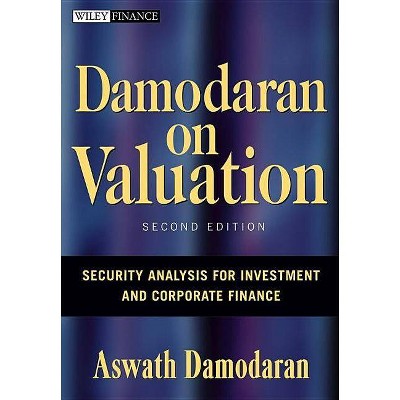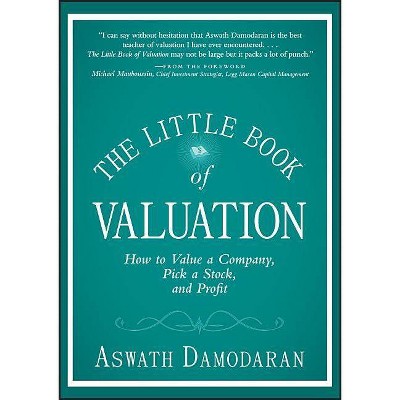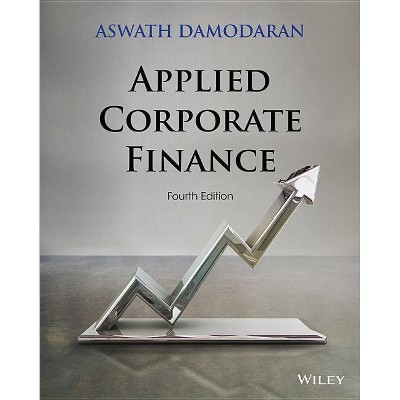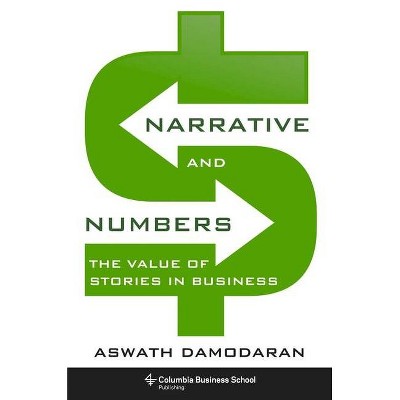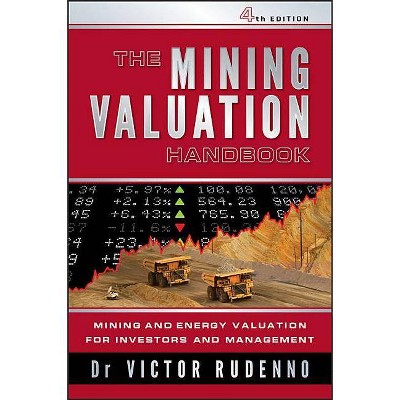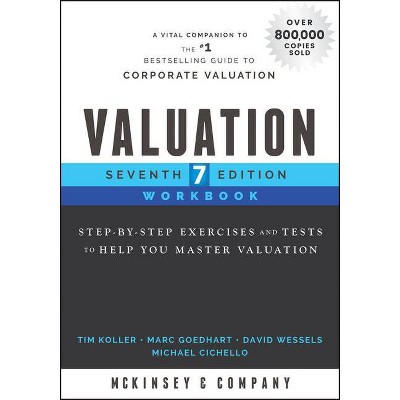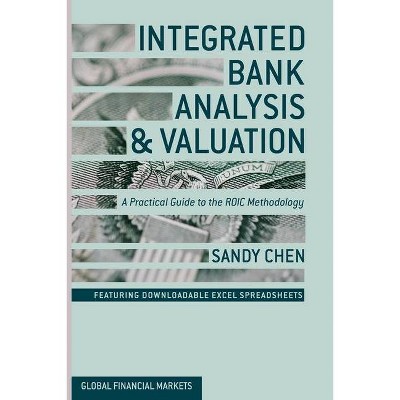Damodaran on Valuation - by Aswath Damodaran (Paperback)
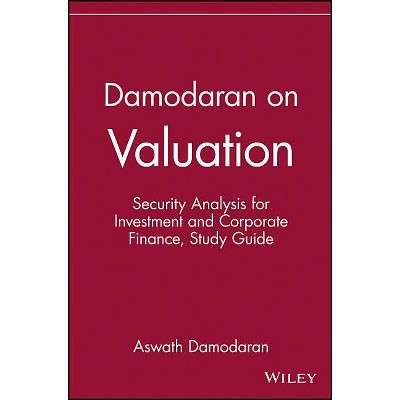
Similar Products
Products of same category from the store
AllProduct info
<p/><br></br><p><b> Book Synopsis </b></p></br></br><p><i>Damondaran on Valuation</i> will not only convince you of the vitalityof the many valuation models available to you, it will help ensurethat you develop the acumen needed to select the right model forany valuation scenario.</p> <p>Written by a gifted teacher and respected valuation authority, <i>Damodaran on Valuation</i> offers systematic examination of the threebasic approaches to valuation - discounted cash-flow valuation, relative valuation, and contingent claim valuation - and thevarious models within these broad categories.</p> <p>Using numerous real-world examples involving both US andInternational firms, the book illuminates the purpose of eachparticular model, its advantages and limitatations, thestep-by-step process involved in putting the model to work, and thekinds of firms to which it is best applied. Among the toolspresented are designed to: </p> <ul> <li>Estimate the cost of equity - including the capital asset pricingmodel and arbitrage pricing model</li> <li>Estimate growth rates - with coverage of how to arrive at aweighted average of growth rates by blending three separateapproaches</li> <li>Value equity - focusing on the Gordon Growth Model and thetwo-and three-stage dividend discount model</li> <li>Measure free cash flow to equity - cash flows that are carefullydelineated from the dividends of most firms</li> <li>Value firms - including free cash flow to firm models, which areespecially suited to highly leveraged firms</li> <li>Estimate the value of assets by looking at the pricing ofcomparable assets - with insight into the use and misuse ofprice/earning and price/book value ratios, and underutilizedprice-to-sales ratios</li> <li>Measure the value of assets that share option characteristics -including a comparative look at the classic Black-Scholes andsimpler binomial models</li> </ul> <p>Supported by an optional IBM-compatible disk, which consists ofspreadsheet programs designed to help users apply the modelshighlighted in the book, Damodaran on Valuation providespractitioners involved in securities analysis, portfoliomanagement, M&A, and corporate finance with the knowledge theyneed to value any asset.</p><p/><br></br><p><b> From the Back Cover </b></p></br></br>Pick the right model for the right moment every time. Whatever your investment philosophy and goals, you've probably had trouble at one time or another in measuring the value of a particular asset. Maybe you've been wary of the effectiveness of all the valuation models out there and relied on the guesstimate approach or simply picked the wrong model for the asset under consideration. Whatever past problems you may have encountered, <i>Damodaran on Valuation</i> will not only convince you of the vitality of the many valuation models available to you, it will help ensure that you develop the acumen needed to select the right model for any valuation scenario. Written by a gifted teacher and respected valuation authority, <i>Damodaran on Valuation</i> offers an overview of the three basic valuation approaches-discounted cash flow, relative, and contingent claim valuation-and the models within these classes. Using plenty of real-world case studies, it explains the purpose of each model, its pros and cons, the steps involved in applying it, and the types of firms to which it is most suited. Soon, you'll have a solid, practical grasp of tools designed to help you estimate the cost of equity, estimate growth rates, value equity, measure free cash flows to equity, value firms, estimate the value of assets via pricing of comparable assets, and measure the value of assets with option-like characteristics. No model is foolproof. And every valuation is vulnerable to changes in the environment, the economy, and the asset itself. But with Damodaran on Valuation at your side, you can be certain that you'll have every weapon at your disposal in the battle to accurately determine the value of an asset and to make the right financial decisions under pressure.<p/><br></br><p><b> About the Author </b></p></br></br><p><b>ASWATH DAMODARAN</b> is Professor of Finance at New York University's Leonard N. Stern School of Business. He has been the recipient of numerous awards for outstanding teaching, including the NYU university-wide Distinguished Teaching Award, and was named one of the nation's top business school teachers by Business Week in 1994. In addition, Damodaran teaches training courses in corporate finance and valuation at many leading investment banks. His publications include <i>Damodaran on Valuation</i>; <i>Investment Valuation</i>; <i>Corporate Finance</i>; <i>Investment Management</i>; and <i>Applied Corporate Finance</i>, all published by Wiley, and <i>The Dark Side of Valuation</i>.</p>
Price History
Price Archive shows prices from various stores, lets you see history and find the cheapest. There is no actual sale on the website. For all support, inquiry and suggestion messagescommunication@pricearchive.us
